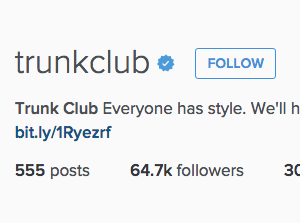by Jack Loechner, Staff Writer @mp_research, August 9, 2016
According to a SumoHeavy study of over 1,000 U.S. consumers, the digital commerce landscape is quickly evolving, and there are many variables that impact the online shopping experience. Looking for a better understanding of how consumers feel and interact with various devices, channels, and features, the study finds that consumers still prefer to purchase products on desktops and laptops rather than on smartphones and tablets, as 3 out of 4 respondents have indicated.
However, 28% prefer to shop on tablets and smartphones, 81% generally claim to have great experiences shopping online using their desktops/laptops, while 48% claim their tablet shopping experiences fall short of expectations. So it’s critical for brands and retailers to provide their customers with a seamless mobile-optimized experience, acknowledges the report.
Mobile has become the fastest growing segment of ecommerce but many brands and retailers remain uncertain that a native mobile app is necessary. Although 64% prefer to shop on mobile-optimized sites over mobile shopping apps, more than a third do prefer mobile apps, something that should be carefully considered as part of a complete mobile strategy, opines the report.
It’s also important to note that m-commerce isn’t just about the transactions, as 62% rely on smartphones to assist with in-person shopping to compare prices (73%), search deals/coupons (58%), and view product reviews (58%)
E-commerce sites often utilize a variety of features to engage visitors, gather user data, display products and disseminate information to shoppers. 47% of consumers agreed that site usability and responsiveness are the most important features, though the features that shoppers interact with are just as important, says the report. 71% frequently utilize product image zoom features, followed by site search (63%). The least used features are product recommendations (29%) and featured product listings (24%).
Similarly, a lack of features or functionality can drive customers away. 81% would abandon an ecommerce site if it contains broken links or frequent error pages. 3 out of 4 say that both slow site speeds and complicated checkout processes will drive them away. Only 4% feel that email subscription pop-ups are generally acceptable and 1 in 4 say it’s acceptable if an incentive is offered.
Social buy buttons were first introduced by Pinterest and allowed consumers to directly purchase products through social posts. Facebook quickly followed and created buy buttons of their own. Today, many other social media platforms are beginning to test the concept, says the report. While 3 out of 4 respondents have heard of these buy buttons, only 10% have actually used one.
61% of those who are familiar with social buy buttons say they will not be using them any time soon. But, 73% of those who’ve tried them say they would use them again. 1 in 5 say they are open to the idea but haven’t had a chance to try it yet.
Virtual agents that provide scalable and uninterrupted customer service for online shoppers are becoming commonplace in digital commerce. 71% have encountered a virtual customer service agent and 42% have interacted with one while shopping online. However, customer sentiment is evenly split. 48% of those who have used virtual agents find them useful and the remaining 52% believe they don’t offer much value, finds the study.
Mobile beacons are creating a new era of connected commerce, where in-store and online experiences intersect to provide compelling retail experiences for shoppers. Beacons serve as a way for brands and retailers to immediately incentivize consumers to purchase specific products as they shop in person, a method which proves more effective than traditional in-store promotion, says the report. 45% would download and use a mobile app that alerts them of special offers while they shop in person.
Virtual Reality will change the way people shop and presents many revolutionary opportunities but not all retail categories will be equally desired by consumers, says the report. 52% are most excited for clothing & apparel and 49% are excited about consumer electronics. Consumer electronics, however, appeals much more to men at 61%, compared to 37% for women, while the least desired retail categories for VR are household appliances (27%) and groceries/ household products (22%).
For access to the full data set, please contact SUMOHeavy at hello@sumoheavy.com
MediaPost.com: Search Marketing Daily
(48)
Report Post




